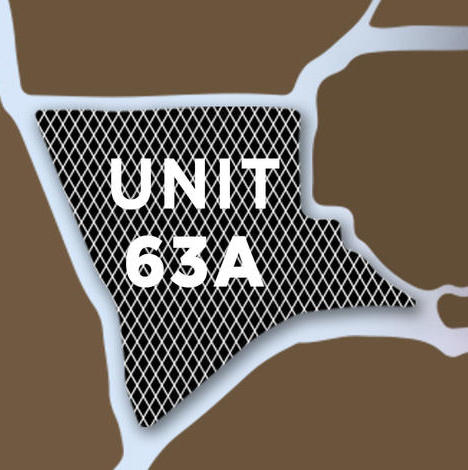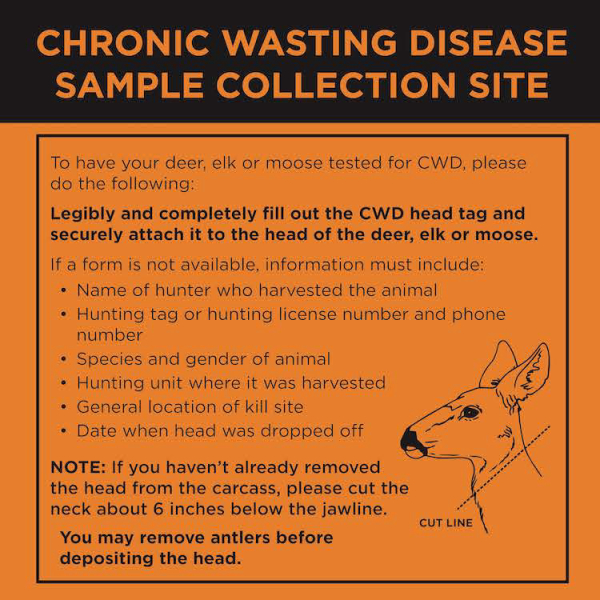

|
During their July meeting, the Idaho Fish and Game Commission approved the addition of Game Management Unit (GMU) 63A to the list of mandatory Chronic Wasting Disease (CWD) sampling areas for deer. The goal of this action is to collect additional samples to better understand potential disease prevalence and distribution for wild populations in GMU 63A, after CWD was found in two domestic elk facilities within its boundaries.
Why is a mandatory CWD sampling area needed?
In December of 2024, Idaho State Department of Agriculture (ISDA) reported the first detection of CWD in domestic elk in Idaho. The positive sample came from a facility in Madison County in the eastern portion of GMU 63A. A second CWD detection was reported in January of 2025 from a captive elk in Jefferson County, also in the eastern portion of GMU 63A.
These detections in captive elk prompted the Commission to implement mandatory CWD testing in unit 63A deer to facilitate Fish and Game’s ability to assess CWD presence in wild populations near these facilities. Findings from this sampling effort will be used to inform future surveillance and management decisions. Mandatory sampling only applies to harvested deer; however, samples from elk and moose are valued and welcome.
Rules governing a mandatory CWD sampling area for deer:
Collecting a CWD sample
Samples can be submitted in a few different ways. Hunters can collect the sample themselves and drop it off at an approved collection site or head barrel, or they can bring their harvest into a Regional Office during regular business hours. Staff are also happy to collect samples for you at any of their Big Game Check Stations run during the Fall hunting seasons.
Please be mindful that lymph nodes and brain stem tissue from fresh or frozen harvested heads are the only way to test for CWD. Meat or muscle tissue cannot be used. A video and additional information on how to collect your own CWD sample for testing can be found on Fish and Game’s website.
Where can you get a free CWD sampling kit?
Hunters with a history of hunting deer in GMU 63A or those with controlled hunts in the unit should receive a sample kit with instructions in the mail before their hunt. Those hunters who are new to hunting this unit, or have hunted it infrequently, can request a free sampling kit by mail at https://idfg.idaho.gov/cwd/sampling-kit-request. Sampling kits will also be available at any of the many sampling collection sites placed at boat launches around the South Fork River in 63A or at the Regional Office.
CWD sample collection sites
Eight sample collection stations will be available in 63A to make turning in a sample easier. Locations include: Deer Parks WMA at Ringel Lane parking area, Mike Walker Boat Ramp, Menan Boat Ramp, Lorenzo Boat Ramp, Twin Bridges Access Area, Heise Bridge Boat Access, Byington Boat Ramp, and the Idaho Falls Regional Fish and Game Office. A complete list of sample collection locations and maps can be found here on Fish and Game’s CWD sample drop-off webpage.
“Although mandatory testing in Unit 63A has only been implemented for deer (as data shows that deer are more susceptible to contracting the disease), all hunters or those who salvage animals are encouraged to submit a sample from their deer, elk, or moose, regardless of where they were harvested,” says Eric Freeman, Regional Wildlife Manager. “Early detection will allow us to implement management strategies to slow the spread of the disease, resulting in healthier populations moving forward.”
Required testing in specific GMUs may change from year to year as we gain more information about how CWD is distributed across the landscape. If you would like to learn more about CWD, please visit the CWD webpage for a variety of resources and videos.
Please contact the Upper Snake Regional Office at (208) 525-7290 with questions or concerns.